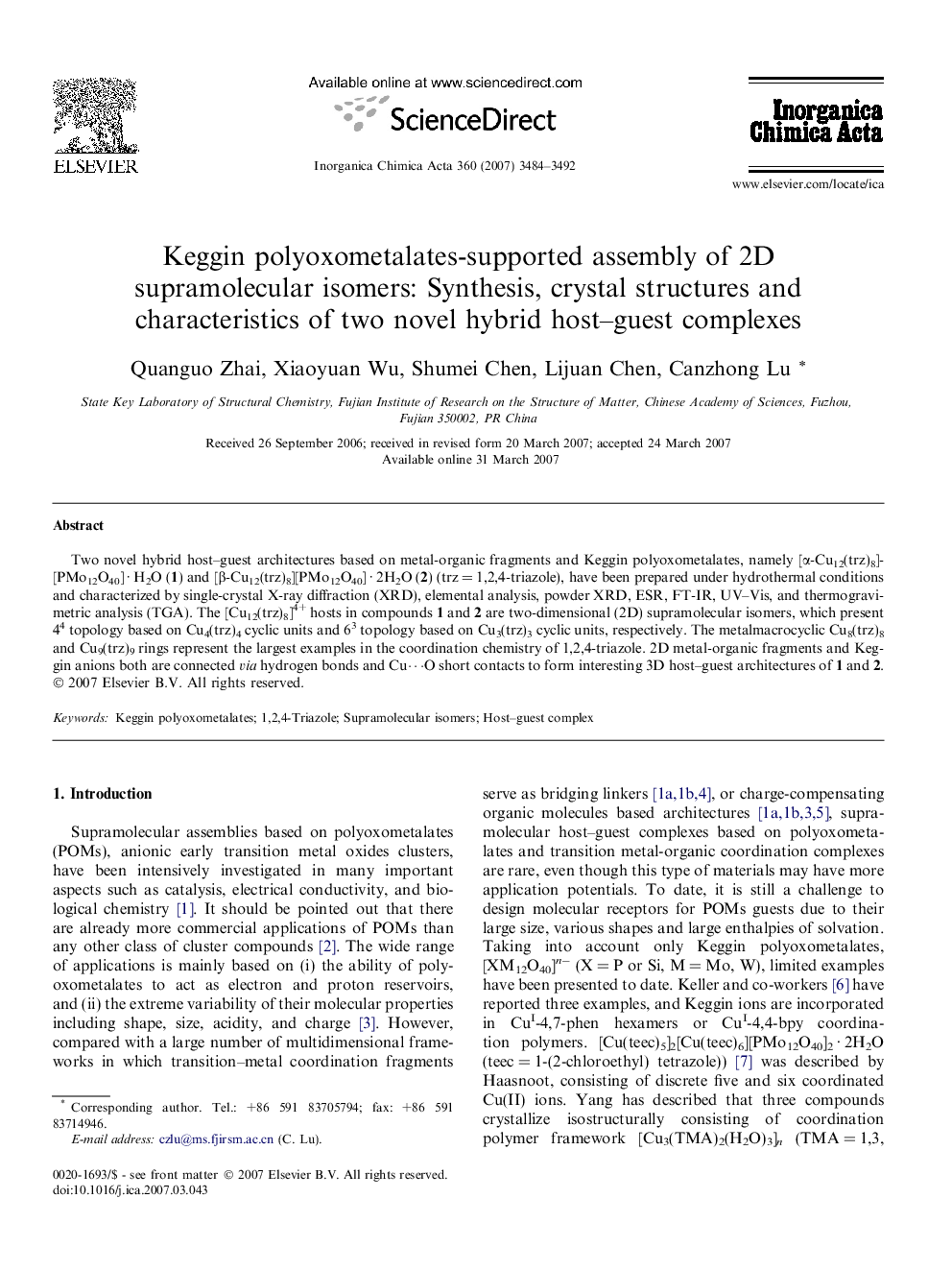| Article ID | Journal | Published Year | Pages | File Type |
|---|---|---|---|---|
| 1309511 | Inorganica Chimica Acta | 2007 | 9 Pages |
Two novel hybrid host–guest architectures based on metal-organic fragments and Keggin polyoxometalates, namely [α-Cu12(trz)8][PMo12O40] · H2O (1) and [β-Cu12(trz)8][PMo12O40] · 2H2O (2) (trz = 1,2,4-triazole), have been prepared under hydrothermal conditions and characterized by single-crystal X-ray diffraction (XRD), elemental analysis, powder XRD, ESR, FT-IR, UV–Vis, and thermogravimetric analysis (TGA). The [Cu12(trz)8]4+ hosts in compounds 1 and 2 are two-dimensional (2D) supramolecular isomers, which present 44 topology based on Cu4(trz)4 cyclic units and 63 topology based on Cu3(trz)3 cyclic units, respectively. The metalmacrocyclic Cu8(trz)8 and Cu9(trz)9 rings represent the largest examples in the coordination chemistry of 1,2,4-triazole. 2D metal-organic fragments and Keggin anions both are connected via hydrogen bonds and Cu⋯O short contacts to form interesting 3D host–guest architectures of 1 and 2.
Graphical abstractTwo novel hybrid host–guest architectures based on metal-organic fragments and Keggin polyoxometalates, namely [α-Cu12(trz)8][PMo12O40] · 2H2O (1) and [β-Cu12(trz)8][PMo12O40] · H2O (2) (trz = 1,2,4-triazole), have been prepared under hydrothermal conditions and characterized.Figure optionsDownload full-size imageDownload as PowerPoint slide
